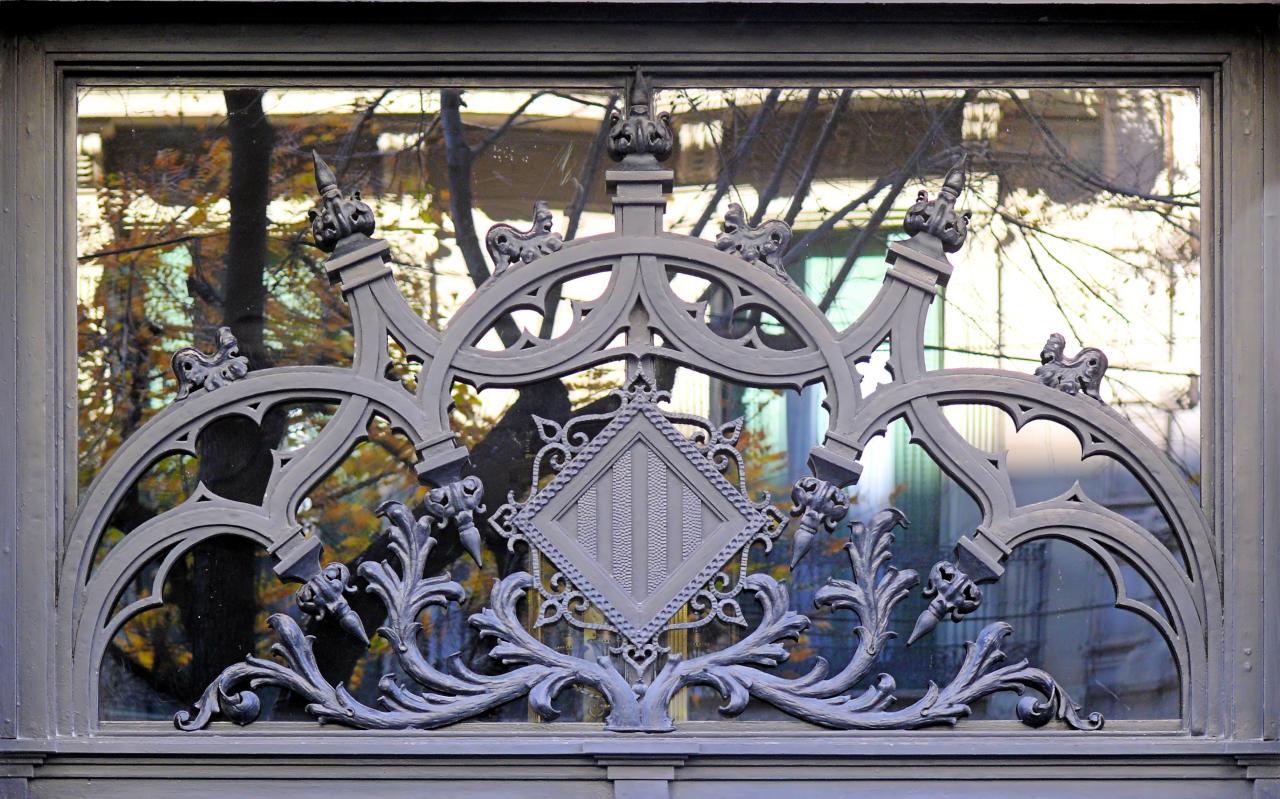#2543. Neo-Gothic Metalwork Facade Detail: Openwork Window Transom with Heraldic Shield
The image shows a magnificent example of decorative metalwork in the form of a neo-Gothic window transom. This exquisite architectural embellishment likely dates back to the late 19th or early 20th century, when there was a revival of Gothic motifs in architecture.
The composition features an intricate openwork metal structure with a symmetrical pattern. The central element is a diamond-shaped heraldic shield with vertical stripes, framed by elegant scrolls and floral motifs. On both sides of the shield are identical arched elements with Gothic tracery, creating the effect of pointed windows. The upper part is decorated with pointed finials reminiscent of the pinnacles of Gothic cathedrals.
Particularly noteworthy is the fineness of the details: elegant acanthus leaves along the lower edge of the composition, meticulously crafted scrolls and tracery. The metal grille contrasts with the natural background visible through it—trees with autumn foliage—creating additional depth of perception. The gray color of the metal gives the structure austerity and monumentality, emphasizing the aristocratic nature of the architectural solution.
This element of facade decoration is not only functional (protecting the window opening) but also serves as a significant artistic accent, demonstrating the high craftsmanship of artistic forging and attention to detail characteristic of the historical period.
